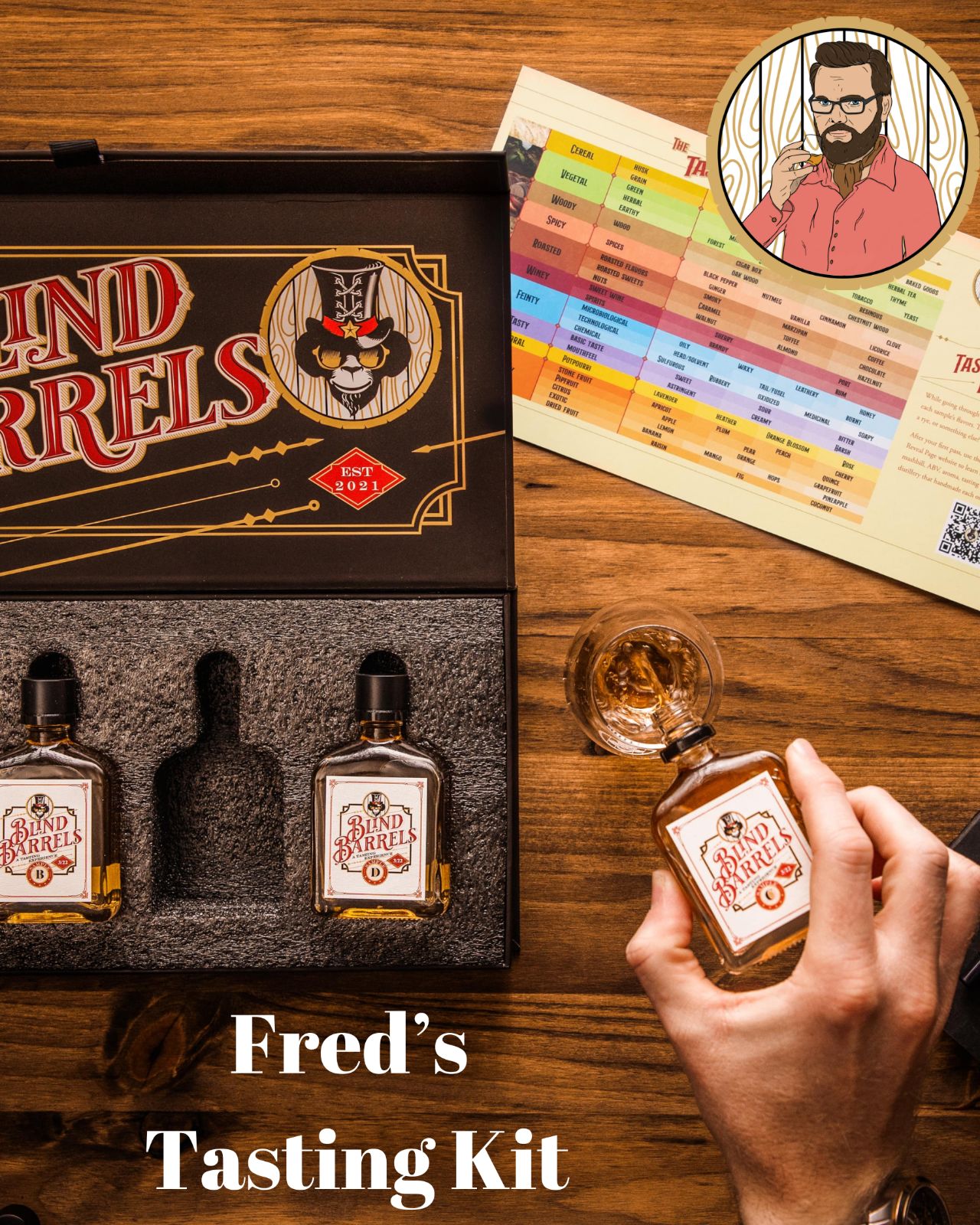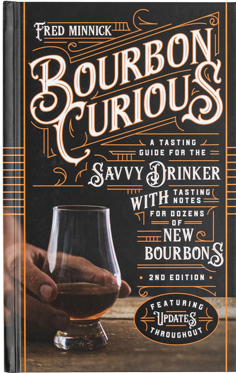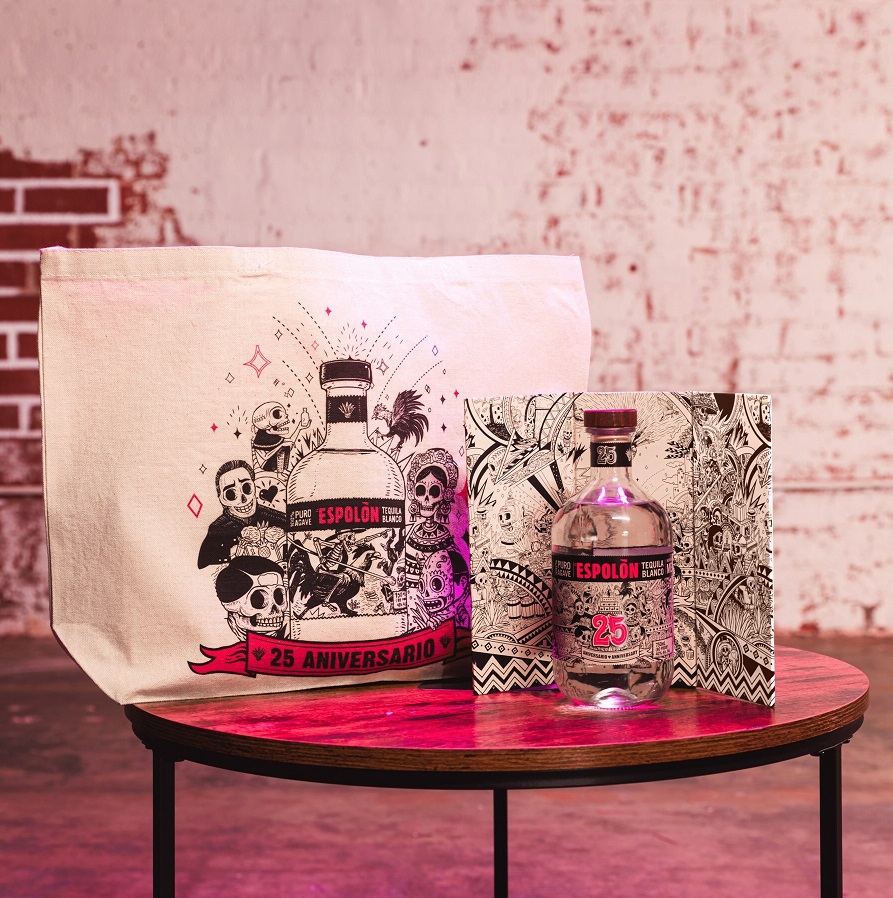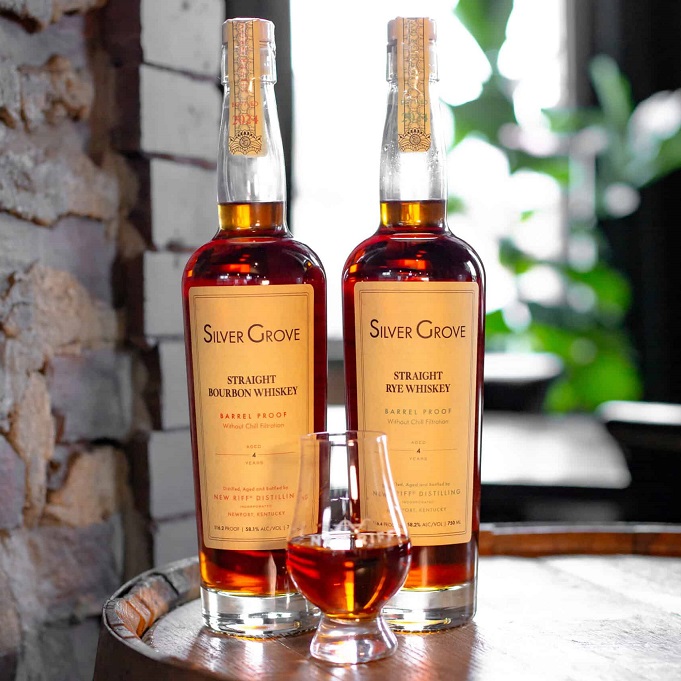Best Bourbon? Or Bourbon Pride? The story of ’18 San Fran Spirits Comp
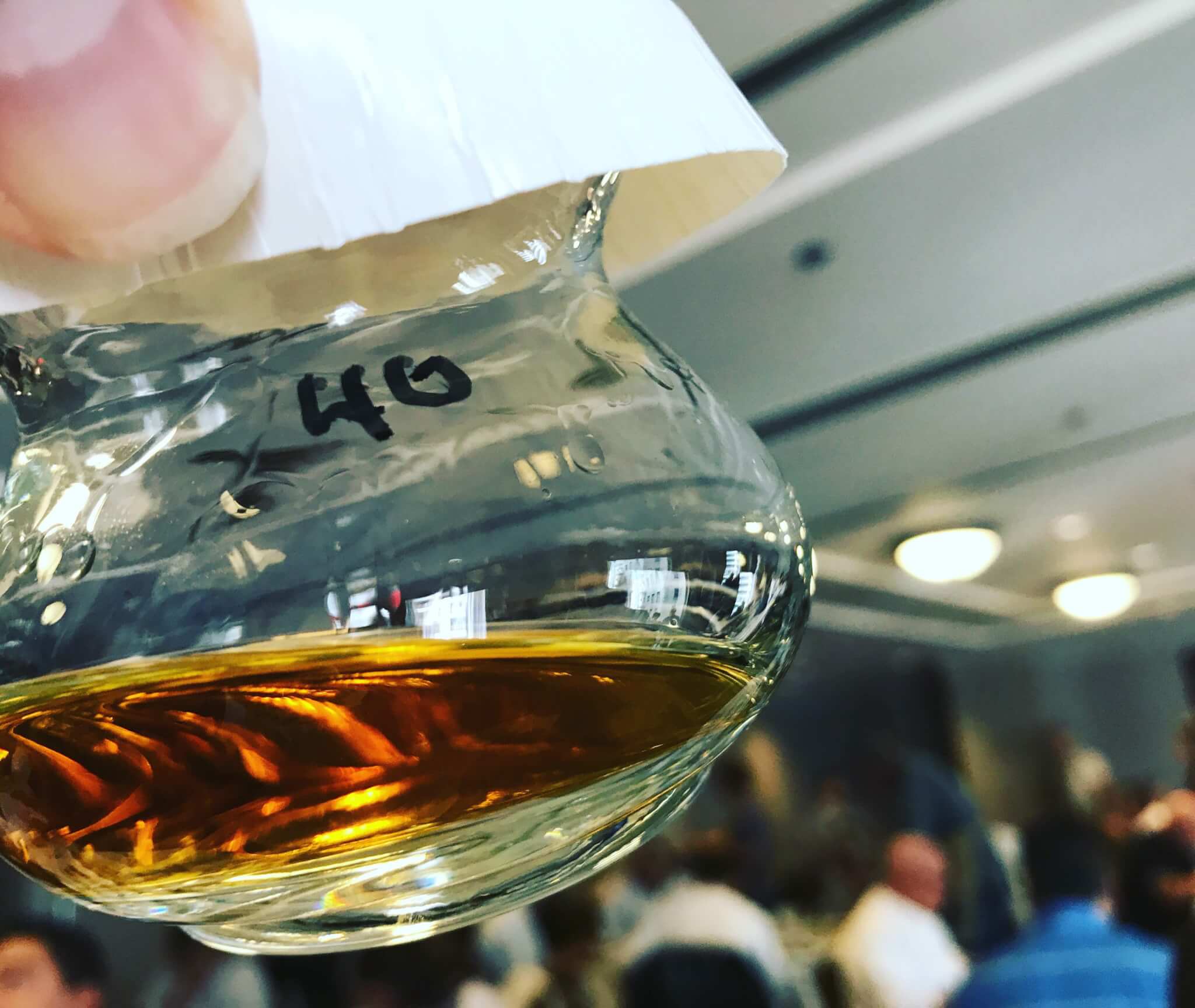
Coming into the San Francisco World Spirits Competition, my mind raced with many wonderful personal and professional things.
Jaclyn is pregnant, and the Bourbon & Beyond announcement neared. In constant excitement about our upcoming baby boy and the eagerness to see bourbon on stage with Sting, Robert Plant and John Mayer, among others, (Oh yeah, we’re due three days after Bourbon & Beyond), I wondered: Could I block my kid-in-the-candy-store enthusiasm and focus?
As a taster, when the glass sits in front of you, you cannot think about anything else. You must focus solely on the spirit, its aroma, how it feels on the palate and finish. I had to table baby names and the opportunity to hang with rockers and focus intently on the spirit in the glass.
In addition, in years past, I was just a judge. This year I was the captain of my table, which really means I sign a bunch of papers, confirming voting and try to lead discussions on the debates. (Read past San Francisco World Spirits Competition stories; Listen to the Bourbon Pursuit Podcast interview with competition founder.)
This year, my panel had gin, tequila, single barrel bourbons, Speyside single malts, straight bourbon, nut liqueurs, craft distiller whiskey and of course, vodka.
I jog through San Francisco Friday morning, observing the city’s stark contrast between ornate architecture and random tents on the sidewalks. The city’s homeless problem is well-documented, but I never expected to see a homeless man shoving a needle in his arm.
As I started our first flight of gin, my thoughts were of that homeless man’s diabetes (that was insulin, right?) and wondered about his story. …
Focus.
I wafted the first gin-filled Neat glass under my nose and picked up a lot of juniper. On the palate, the first one was tasty, but I picked up too much juniper. I gave it a Silver, which is the equivalent to an 80-89 magazine score. San Francisco requires its judges to grade each glass and not to compare one glass to another at the panel level. If a spirit receives all Golds from a panel, it’s given a Double Gold and the panel can send it to the Super Tasting round. With more than 40 judges, there are about a dozen panels, and each table gets multiple categories.
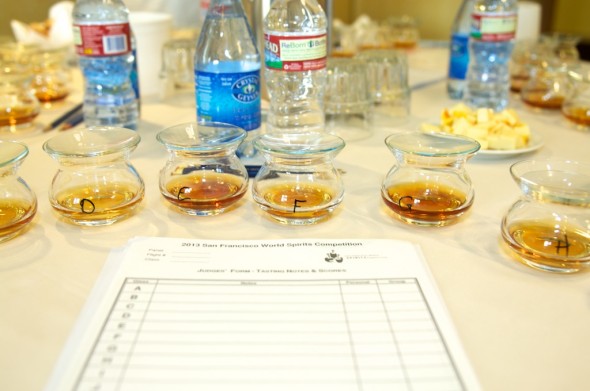
The elite Double Golds meet eight “Super Tasting” specialist judges, who vote to send a product to the Sweepstakes round. This year, I didn’t get small batch bourbons or the extra aged juice, so I was eager to join the Bourbon Super Tasting to see what my colleagues had sent forth. After the Super Tasting, all judges vote in Sweepstakes and decide Best of each category and Best in Show. We taste blind, where we receive a glass, spirits type and its proof. We never know the brand.
Bourbon really showed up this year, but our panel rarely came to a consensus and we didn’t send many bourbons to the Super Tasting.
For example, I found one bourbon to be overly astringent, but palatable enough to be a cocktail mixer. I gave it a Bronze, or the equivalent to a 75-point score I’ve given in Whisky Advocate, but the other judges were in love with it, thinking it had complexity and minerality they craved. They gave high Silvers and Golds, giving the bourbon a solid Silver. I don’t know this bourbon brand, but this is how the panel rounds go.
And you want discourse at times. If you really love something, you need to fight for it to receive the medal you want it to. If you really loathe something, you must hold your ground as well. I loved a 112-proof bourbon for its rich caramel, that I went round-and-round with my panelists to get the single Gold up to a Double Gold. In the end, I couldn’t sway the Silver holdout, and it received a Gold. BUT I’ll be buying a case of that brand after finding out what it was!
When tasting glass A in a Single Barrel round, I wrote “beautiful and complex.” I was prepared to dig-in and argue for this glass. At 100 proof, it packed more flavor than anything I had tasted at this point in the competition. Layered with toffee, caramel, almond butter, honey and fried pie crust, Glass A offered something special.
When the voting started, Erik Adkins, the beverage director for the Slanted Door Group (Hardwater in San Fran) voted first. “Gold,” he said. Next up was whiskey specialist Tony Devencenzi, whose palate was very close to mine but still had different tastes. “Gold,” he said. Holy shit, I thought, we may Double Gold this bad boy and send it onto the Super Tasting. But Jackson Cannon, owner of Eastern Standard in Boston, held his head down just before picking up the glass. Was he second guessing himself? Did he not like it? Did our Golds thrust his palate to suddenly love it? He looked at his notes once more and simply said, “Gold.”
For the first time, we had a Double Gold without a conversation. We sent it to the Super Tasting, where it faced higher proof foes. I worried about this, because 100-proof and below bourbons often struggle against the robust 115-proofers and above. And in the Super Tasting, I face my greatest challenge—I have to keep my trap shut. I cannot argue for something I like; we vote with a mere show of hands.
In the Super Tasting, each one was worthy of Best Bourbon contention. In here, we merely narrowed down the categories, such as Small Batch under 5 years old, Straight Bourbon, Single Barrel, etc. This was a lightening round. We voted and the bourbons went on.
I don’t recall the proofs of the others, but I remember two Single Barrels being 100 proof and one with a distinct fried pie crust note.
In the Sweepstakes, bourbons showed exceptionally well. I was really impressed with a younger small batch bourbon that held its own for under five years. It had a lovely cornbread and spice note that was impressive. It didn’t win, but Old Nick Williams Carolina Bourbon should be very proud of its young bourbon fairing so well in a sea of giants. In many respects, Old Nick was Loyola from this year’s NCAA tournament. They were close to winning Best Small Batch.
For best single barrel bourbon, it was a horse race, with two 100 proofers and a cask strength so delicious I actually didn’t spit. I found the cask strength to present several roasted nut notes and the kind of sweetness you find from honey barrels. It was fantastic. But Glass 40 bested what I later learned was Boone County 12-year-old Cask Strength Bourbon (LDI sourced). Glass 40’s pie crust note was so powerful I had to rinse my mouth three times to give the other bourbons a fair shake.
The Special Barrel Finished bourbon, while good, just didn’t have the complexity to compete with the field. There were two Straight Cask Strength Bourbons I thought could topple Glass 40, but my colleagues didn’t agree and neither made it out of the Straight Bourbon round.
Best Bourbon truly came down to Best Small Batch and Best Single Barrel. Best Small Batch was supremely malty, with a lot of back-of-the-palate spicy sweetness I rarely find. Think of the spiced Jams and honeys; it had that kind of flavor range. It, too, was in the lower proof range at 94.
But I really didn’t think Glass 37 had the complexity of 40, which I loved more by the minute and so did my colleagues; it won handily.
The pride I felt at that moment, having tasted 40 in the panel round all the way through the Sweepstakes, was like I drank this bourbon almost every day. As it turns out, I do.
Henry McKenna 10-year-old won Best Bourbon at the San Francisco World Spirits Competition. Heaven Hill, which also won Best Small Batch with Elijah Craig, later told me this was just an everyday Henry McKenna in the San Francisco market.
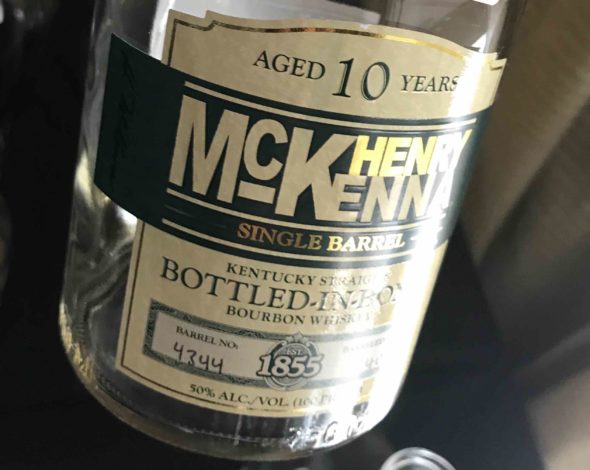
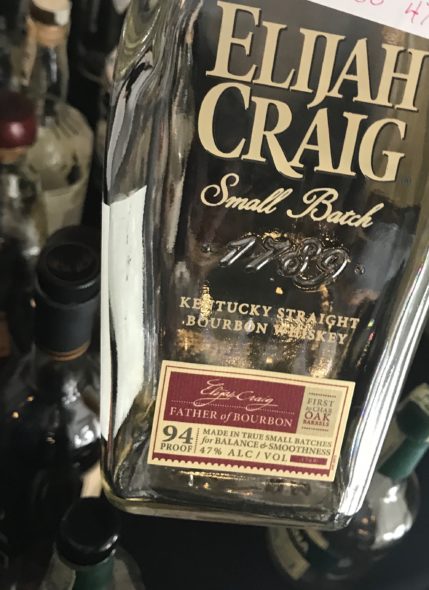
For as good as the bourbons faired, ryes lacked depth. It was really one glass—a brute of flavor—the Knob Creek Cask Strength Rye.
However, neither the bourbon nor rye or Irish, Craft Distiller Whiskey (Balcone’s Single Malt) Canadian (Crown “Bourbon” Mash), corn and other whiskies stood a chance against the Scotch. The Scotch Malt Whisky Society Cask No. 29.224 “We Arrived!” steamrolled through the entire competition like a hot knife through butter. This Independent Merchant Single Malt stood out, was complex and had all judges looking for more. Yet I’d be remiss if I didn’t tell you the truth about tasting competitions: It’s about the moment. And what won today may not win tomorrow. Tasting is such a personal experience impacted by how one feels. Multiply that by the number of judges and you have a genuine competition as easy to predict as the Kentucky Derby; you just never know who will win.
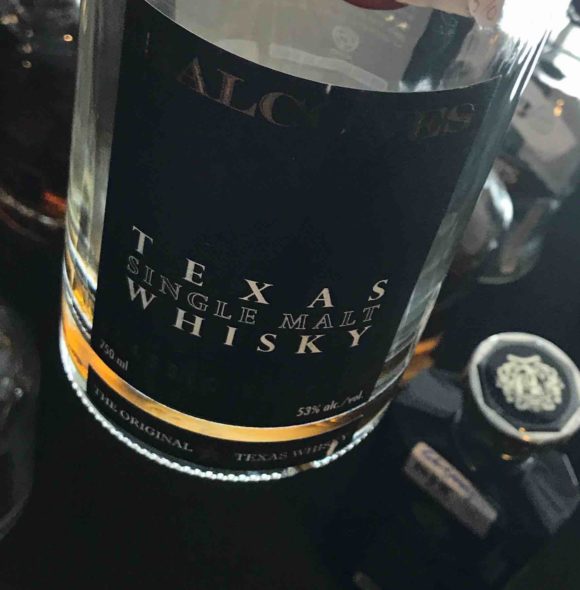
Henry McKenna, for example, has always been a contender, but it has lost in years past to Knob Creek, Pappy, Four Roses and others. If we held the competition today, who knows, maybe Old Grand-Dad wins? You just cannot predict the results, but the judges are topnotch and I trust our judgement.…. Even if that means we likely made it harder to find my beloved House bourbon.
Now, back to baby names. I hear Henry’s popular these days.
Fred Minnick is the author of Bourbon Curious and Bourbon: The Rise, Fall & Rebirth of An American Whiskey.



